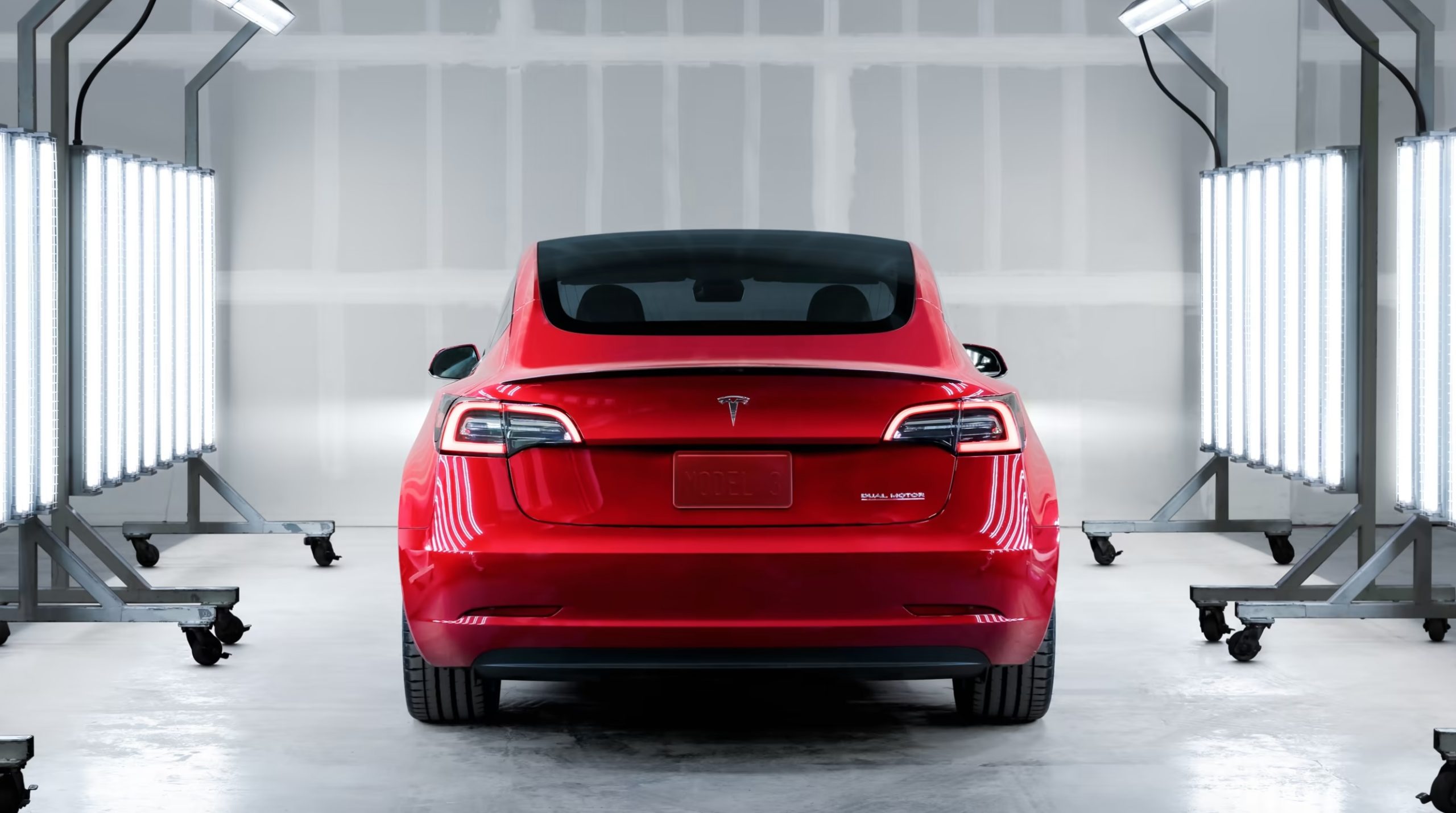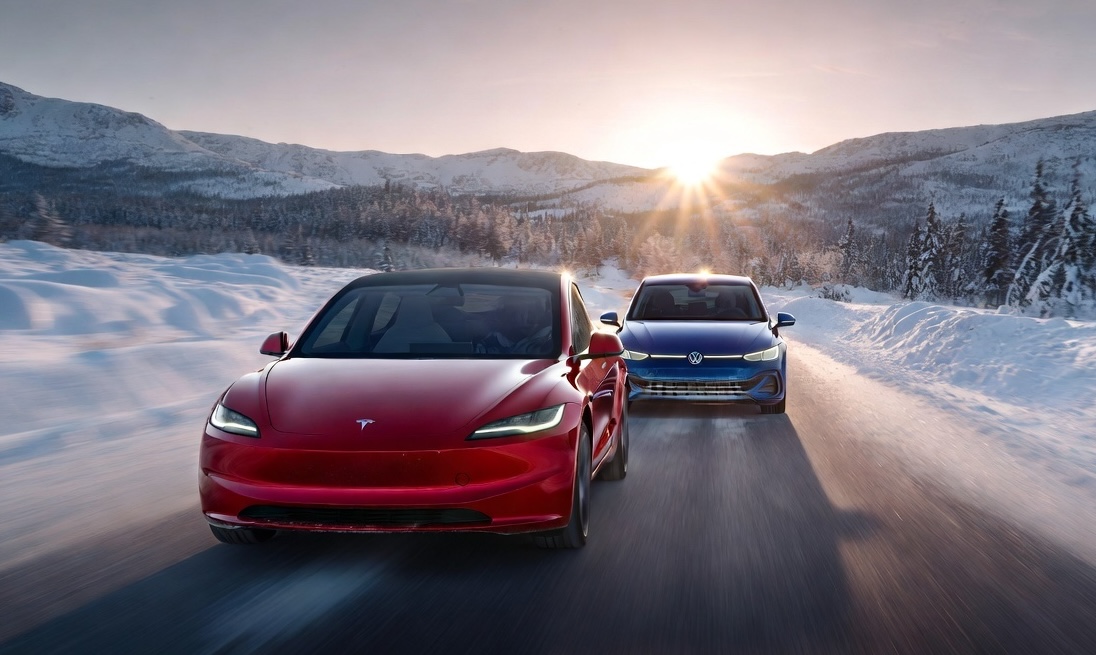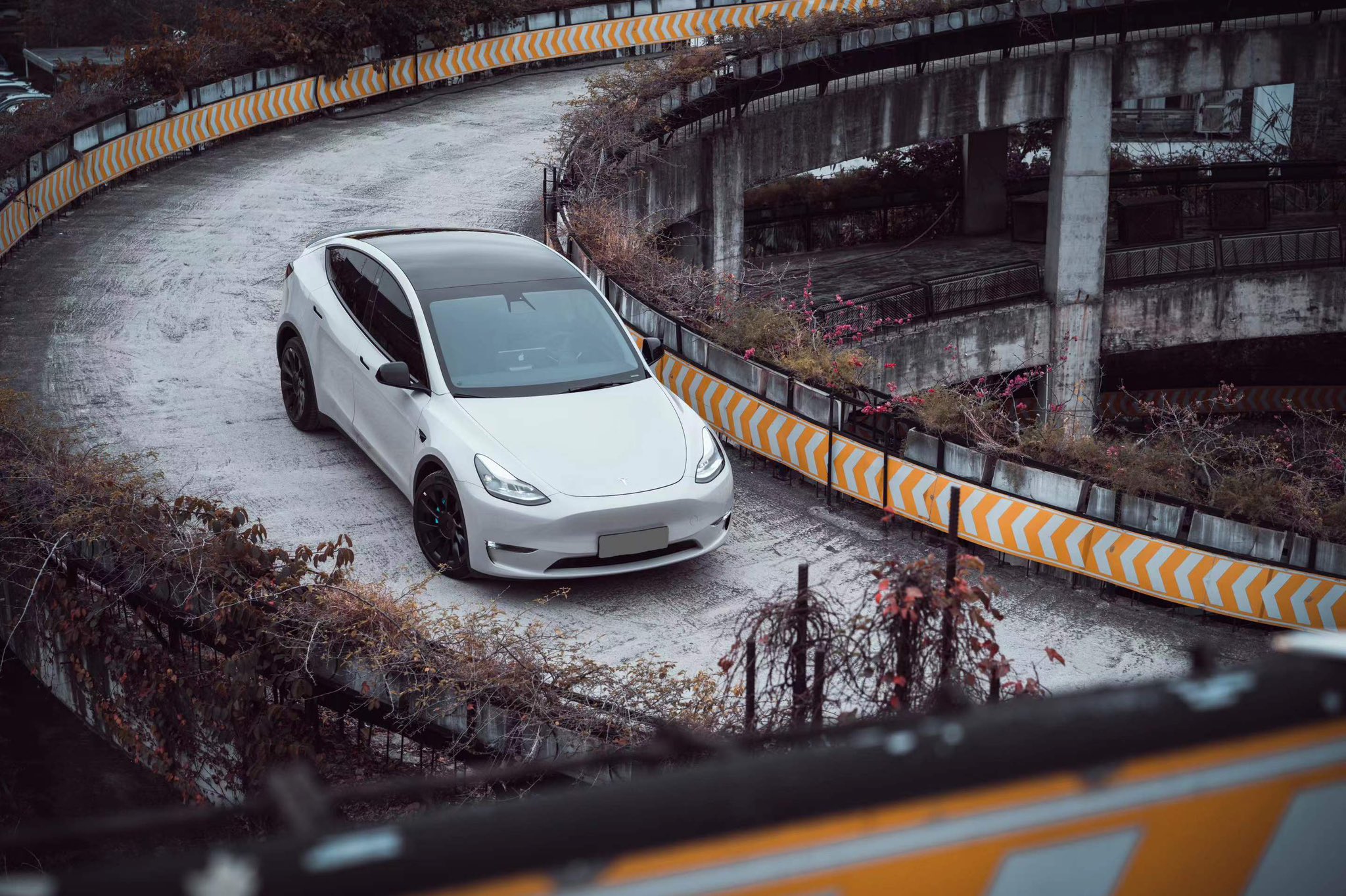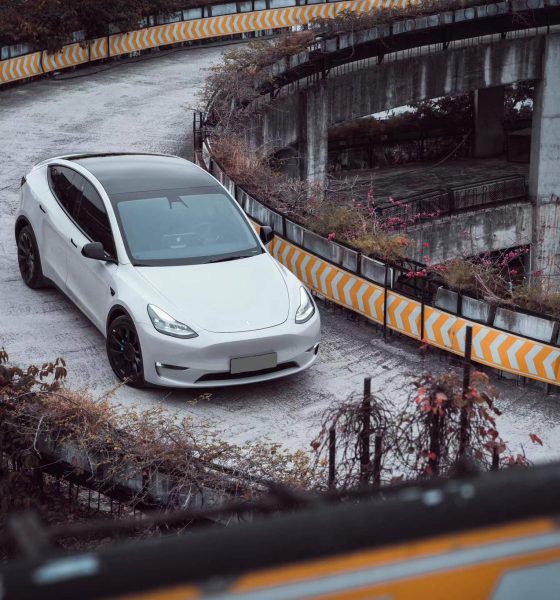A survey conducted by Dan Ives has found a spike in interest in Tesla vehicles in China following the recent price cuts.
The Tesla price cuts were not taken well in China, with hundreds of previous buyers storming Tesla showrooms, demanding the automaker make amends for the abrupt price change. Nonetheless, according to a survey by Dan Ives of the Wedbush Securities investing firm, interest in the brand has spiked in China despite the outrage.
According to the survey conducted by Mr. Ives, initially reported by Barrons, “Our survey found that 76% of EV Chinese consumers are considering buying a Tesla in 2023, with the nearest domestic competitors BYD in second place followed by NIO in third place.” This data coming only days after the China Merchants Bank International announced that Tesla sales had skyrocketed according to its payment data. Furthermore, this renewed interest in the Tesla brand is backed up by the ordering times listed on the Tesla China website.
Order times for the base model Tesla Model 3 and Model Y extend roughly a month, while the long-range trims for both vehicles have been pushed out even further. And while Performance variants of both models have remained fairly unaffected by the new demand, if the recent trend is anything to go by, this lull may not last very long.
The surge in demand has even extended outside of China as well. Late last week, it was found that order times for the Tesla Model 3 and Model Y in Germany have been pushed out by a similar amount as their Chinese counterparts. While even here in the United States, wait times for most Model 3 trims extend into next month, while Model Y customers have reported wait times as long as multiple months.
Following this recent surge in demand, investors have responded in turn, ending the week with a rare positive movement for the Tesla stock, up nearly 5% on Friday and up almost 15% over the week. It’s no wonder many now believe this is the beginning of a larger rebound for the automaker. Though it should be noted that with the consumer price index’s recent gradual decline, many stocks, including those in the automotive industry, also saw their stocks recover towards the end of this week.
But outside of Tesla and its customers, perhaps the most significant change that has occurred following the American automaker’s move is the reaction of other brands. In the second half of last year, many automakers followed the steps of Tesla by raising prices for the new electric models. Most infamously, the bastion of affordable electric trucks, the Ford F150 Lightning, saw its Pro trim balloon above $50,000 for the first time. However, many automakers have now been forced to follow Tesla, cutting prices to remain competitive.
The most aggressive price cuts by other brands following Tesla have been seen in China, where Tesla implemented its price cut first. Still, many analysts anticipate that these price cuts will come to Western markets in the coming month(s) as the increasingly competitive EV market pushes prices lower for the first time in a long time.
William owns Tesla stock but is not invested in any Wedbush products, nor are his funds managed by the firm.
What do you think of the article? Do you have any comments, questions, or concerns? Shoot me an email at william@teslarati.com. You can also reach me on Twitter @WilliamWritin. If you have news tips, email us at tips@teslarati.com!

Elon Musk
SpaceX maintains unbelievable Starship target despite Booster 18 incident
It appears that it will take more than an anomaly to stop SpaceX’s march towards Starship V3’s refinement.

SpaceX recently shared an incredibly ambitious and bold update about Starship V3’s 12th test flight.
Despite the anomaly that damaged Booster 18, SpaceX maintained that it was still following its plans for the upgraded spacecraft and booster for the coming months. Needless to say, it appears that it will take more than an anomaly to stop SpaceX’s march towards Starship V3’s refinement.
Starship V3 is still on a rapid development path
SpaceX’s update was posted through the private space company’s official account on social media platform X. As per the company, “the Starbase team plans to have the next Super Heavy booster stacked in December, which puts it on pace with the test schedule planned for the first Starship V3 vehicle and associated ground systems.”
SpaceX then announced that Starship V3’s maiden flight is still expected to happen early next year. “Starship’s twelfth flight test remains targeted for the first quarter of 2026,” the company wrote in its post on X.
Elon Musk mentioned a similar timeline on X earlier this year. In the lead up to Starshp Flight 11, which proved flawless, Musk stated that “Starship V3 is a massive upgrade from the current V2 and should be through production and testing by end of year, with heavy flight activity next year.” Musk has also mentioned that Starship V3 should be good enough to use for initial Mars missions.
Booster 18 failure not slowing Starship V3’s schedule
SpaceX’s bold update came after Booster 18 experienced a major anomaly during gas system pressure testing at SpaceX’s Massey facility in Starbase, Texas. SpaceX confirmed in a post on X that no propellant was loaded, no engines were installed, and personnel were positioned at a safe distance when the booster’s lower section crumpled, resulting in no injuries.
Still, livestream footage showed significant damage around the liquid oxygen tank area of Booster 18, leading observers to speculate that the booster was a total loss. Booster 18 was among the earliest vehicles in the Starship V3 series, making the failure notable. Despite the setback, Starship V3’s development plans appear unchanged, with SpaceX pushing ahead of its Q1 2026 test flight target.
News
Tesla Sweden faces fresh union blockade at key Gothenburg paint shop
Allround Lack works with painting and damage repair of passenger cars, including Teslas.

Tesla’s ongoing labor conflict in Sweden escalated again as the trade union IF Metall issued a new blockade halting all Tesla paintwork at Allround Lack in Gothenburg.
Allround Lack works with painting and damage repair of passenger cars, including Teslas. It currently employs about 20 employees.
Yet another blockade against Tesla Sweden
IF Metall’s latest notice ordered a full work stoppage for all Tesla-related activity at Allround Lack. With the blockade in place, paint jobs on Tesla-owned vehicles, factory-warranty repairs, and transport-damage fixes, will be effectively frozen, as noted in a report from Dagens Arbete. While Allround Lack is a small paint shop, its work with Tesla means that the blockade would add challenges to the company’s operations in Sweden, at least to some degree.
Paint shop blockades have been a recurring tool in the longstanding conflict. The first appeared in late 2023, when repair shops were barred from servicing Tesla vehicles. Days later, the Painters’ Union implemented a nationwide halt on Tesla paint work across more than 100 shops. Since then, a steady stream of workshops has been pulled into the conflict.
Earlier blockades faced backlash from consumers
The sweeping effects of the early blockades drew criticism from industry groups and consumers. Employers and industry organization Transportföretagen stated that the strikes harmed numerous workshops across Sweden, with about 10 of its members losing about 50% of their revenue.
Private owners also expressed their objections. Tibor Blomhäll, chairman of Tesla Club Sweden, told DA in a previous statement that the blockades from IF Metall gave the impression that the union was specifically attacking consumers. “If I get parking damage to my car, I pay for the paint myself. The company Tesla is not involved in that deal at all. So many people felt singled out, almost stigmatized. What have I done as a private individual to get a union against me?” Blomhäll stated.
In response to these complaints, IF Metall introduced exemptions, allowing severely damaged vehicles to be repaired. The union later reopened access for private owners at workshops with collective agreements. The blockades at the workshops were also reformulated to only apply to work that is “ordered by Tesla on Tesla’s own cars, as well as work covered by factory warranties and transport damage on Tesla cars.”
News
Tesla breaks Norway’s all-time annual sales record with one month to spare
With November alone delivering 4,260 new registrations, Tesla has cemented its most dominant year ever in one of Europe’s most mature EV markets.

Tesla shattered Norway’s decade-old annual sales record this month, overtaking Volkswagen’s long-standing milestone with over one month still left in the year. Backed by surging demand ahead of Norway’s upcoming VAT changes, Tesla has already registered 26,666 vehicles year-to-date, surpassing Volkswagen’s 2016 record of 26,572 units.
With November alone delivering 4,260 new registrations month-to-date, Tesla has cemented its most dominant year ever in one of Europe’s most mature EV markets.
Model Y drives historic surge in Norway
Tesla’s impressive momentum has been led overwhelmingly by the Model Y, which accounted for 21,517 of Norway’s registrations this year, as noted in a CarUp report, citing data from Elbil Statistik. The Model 3 followed with 5,087 units, while the Model S and Model X contributed 30 and 19 vehicles, respectively. Even the parallel-imported Cybertruck made the charts with 13 registrations.
Demand intensified sharply through autumn as Norwegian buyers rushed to secure deliveries before the country’s VAT changes take effect in January. The new regulation is expected to add roughly NOK 50,000 to the price of a Model Y, prompting a wave of early purchases that helped lift Tesla beyond the previous all-time record well before year-end.
With December still ahead, Tesla is positioned to extend its historic lead further. Needless to say, it appears that Norway will prove to be one of Tesla’s strongest markets in Europe.
FSD could be a notable demand driver in 2026
What’s especially interesting about Tesla’s feat in Norway is that the company’s biggest selling point today, Full Self-Driving (Supervised), is not yet available there. Tesla, however, recently noted in a post on X that the Dutch regulator RDW has reportedly committed to issuing a Netherlands national approval for FSD (Supervised) in February 2026.
The RDW posted a response to Tesla’s post, clarifying the February 2026 target but stating that FSD’s approval is not assured yet. “The RDW has drawn up a schedule with Tesla in which Tesla is expected to be able to demonstrate that FSD Supervised meets the requirements in February 2026. RDW and Tesla know what efforts need to be made to make a decision on this in February. Whether the schedule will be met remains to be seen in the coming period,” the RDW wrote in a post on its official wesbite.
If FSD (Supervised) does get approved next year, Tesla’s vehicles could gain a notable advantage over competitors, as they would be the only vehicles on the market capable of driving themselves on both inner-city streets and highways with practically no driver input.










